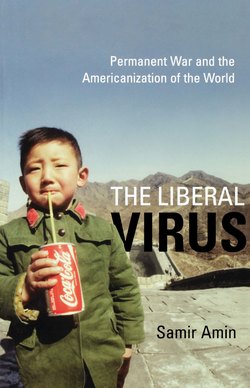Читать книгу The Liberal Virus - Samir Amin - Страница 6
На сайте Литреса книга снята с продажи.
ОглавлениеIntroduction
TOWARDS THE END OF THE TWENTIETH CENTURY a sickness struck the world. Not everyone died, but all suffered from it. The virus which caused the epidemic was called the “liberal virus.” This virus made its appearance around the sixteenth century within the triangle described by Paris-London-Amsterdam. The symptoms that the disease then manifested appeared harmless. Men (whom the virus struck in preference to women) not only became accustomed to it and developed the necessary antibodies, but were able to benefit from the increased energy that it elicited. But the virus traveled across the Atlantic and found a favorable place among those who, deprived of antibodies, spread it. As a result, the malady took on extreme forms.
The virus reappeared in Europe towards the end of the twentieth century, returning from America where it had mutated. Now strengthened, it came to destroy a great number of the antibodies that the Europeans had developed over the course of the three preceding centuries. It provoked an epidemic that would have been fatal to the human race if it had not been for the most robust of the inhabitants of the old countries who survived the epidemic and finally were able to eradicate the disease.
The virus caused among its victims a curious schizophrenia. Humans no longer lived as whole beings, organizing themselves to produce what is necessary to satisfy their needs (what the learned have called “economic life”) and simultaneously developing the institutions, the rules, and the customs that enable them to develop (what the same learned people have called “political life”), conscious that the two aspects of social life are inseparable. Henceforth, they lived sometimes as homo oeconomicus, abandoning to “the market” the responsibility to regulate their “economic life” automatically, and sometimes as “citizens,” depositing in ballot boxes their choices for those who would have the responsibility to establish the rules of the game for their “political life.”
The crises of the end of the twentieth century and the beginning of the twenty-first century, now happily and definitively left behind, were articulated around the confusions and impasses provoked by this schizophrenia. Reason—the true one, not the American one—finally caused it to disappear. Everyone survived, Europeans, Asians, Africans, Americans, and even Texans, who have much changed since and become human beings like the others.
I have chosen this happy ending, not through some incorrigible optimism, but because in the other hypothesis there would no longer be anyone left to write history. In that version, Fukuyama was right: liberalism truly announced the end of history. All of humanity perished in the holocaust. The last survivors, the Texans, were organized into a wandering band and then immolated in turn, on the orders of the chief of their sect, whom they had believed to be a charismatic figure. He too was named Bush.
I imagine that the history of our epoch will be written somewhat in these terms. In any case, it is in the same terms that I here propose to analyze these crises.
